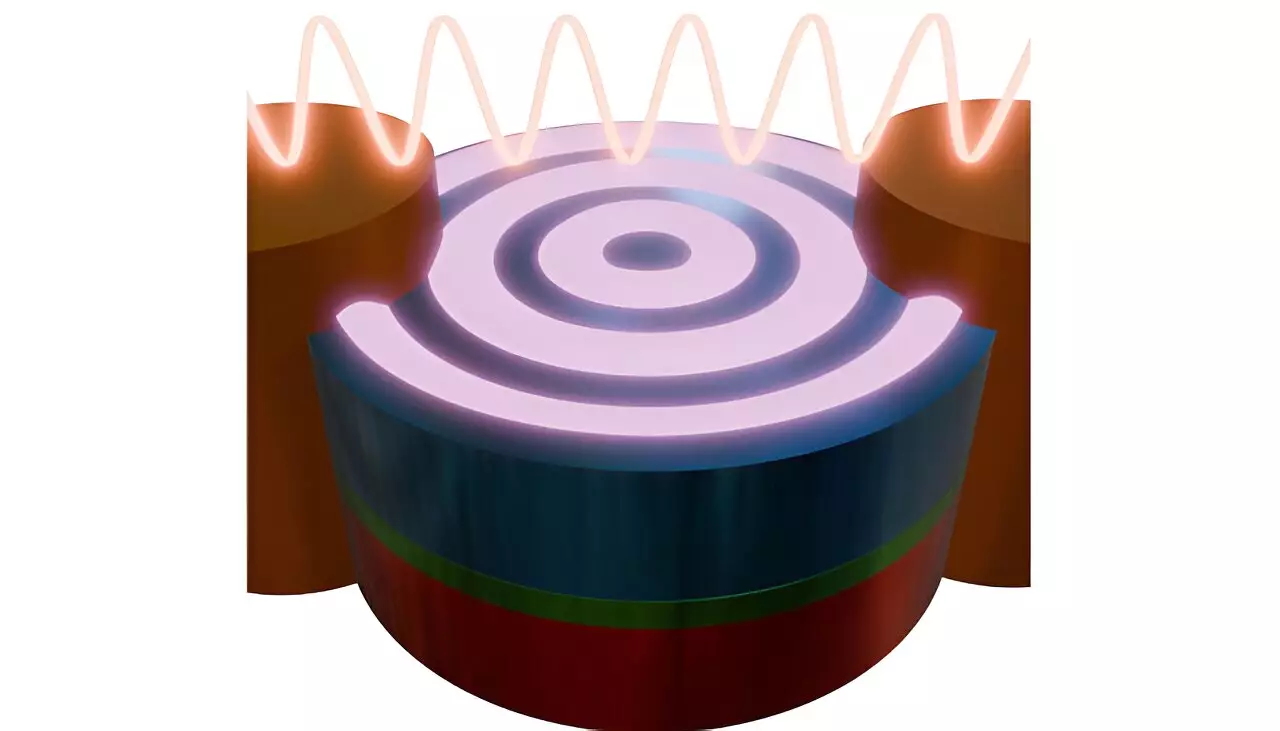The evolving landscape of computing technology has long fascinated scientists and engineers alike, particularly as traditional approaches encounter significant challenges tied to energy efficiency and physical limitations. A recent collaborative study from institutions including the University of Vienna and the Max Planck Institute for Intelligent Systems has scrutinized these issues and proposed innovative solutions through the use of magnonic circuits. The implications of this research, published in the journal Science Advances, suggest a transformative shift toward reprogrammable and highly efficient computing systems, igniting interest in the reimagining of existing technologies.
At the core of this research lies the concept of spin waves, more commonly known as magnons. By likening these phenomena to ripples created by a pebble tossed into a tranquil pond, researchers have rendered the concept accessible. Within a magnetic material, spin waves propagate similarly, channeling energy and information with remarkable efficiency. This approach stands in stark contrast to conventional CMOS technology, which relies on billions of transistors to operate current computing devices. As the demand for miniaturization continues to rise, traditional methods are increasingly strained, necessitating exploration into more sustainable alternatives.
Current processors grapple with escalating energy consumption and hefty power losses, not to mention the constraints imposed by established fabrication techniques, which typically entail the use of advanced lithography in cleanroom settings. These challenges culminate in a pressing need for next-generation architectures capable of delivering enhanced performance while lowering energy demands. The limitations of traditional nano antennas exemplify this crisis, as generating short-wavelength spin waves has proven inefficient, complicating potential advancements in the field.
The breakthrough achieved by the researchers from Austria and Germany involved the use of a lateral alternating current flowing through a specially designed magnetic stack. This design harnesses swirling magnetic patterns and significantly amplifies the efficiency of spin-wave emission, dwarfing the capabilities of previous methodologies. By integrating synthetic ferrimagnetic systems—where opposing magnetization patterns optimize additional influences on wave propagation—the new technique heralds a promising shift towards creating viable magnonic devices for both classical and unconventional computing tasks.
An especially compelling aspect of this research is the ability to dynamically steer the direction of spin waves. By employing materials that can alter their magnetization in response to applied strain, researchers have effectively created a mechanism for real-time control over wave propagation. This innovative capability paves the way for the potential development of adaptive magnonic devices, epitomizing a substantial leap toward the creation of real-time reprogrammable computing circuits.
The study’s findings were bolstered by the utilization of cutting-edge imaging technology. The ‘Maxymus’ X-ray microscope, situated at the BESSY II electron synchrotron in Berlin, enabled researchers to observe spin waves operating at nanoscale wavelengths and frequencies in the gigahertz range. Incorporating advanced micromagnetic simulation software, known as magnum.np, further augmented the team’s capacity to understand the intricate mechanisms behind the efficient generation and control of spin waves. This holistic approach reflects the concerted effort necessary to push the boundaries of current technologies and unravel the complexities of magnonic architectures.
The ability to create flexible, reprogrammable magnonic circuits stands as a beacon of hope in addressing the ever-increasing demands for miniaturization and energy efficiency in computing technology. As researchers continue to refine these methods, we may be on the precipice of a new era that fosters not only technological advancement but also sustainability across sectors reliant on computing power. As this research unfolds further, the prospect of diverting from traditional computing paradigms hints at a future where efficiency and adaptability reign supreme, reshaping our understanding and application of computational technologies.
The strides made by this collaborative research represent a significant leap forward for the field, offering a new frontier in the quest for advanced, energy-efficient computing systems. As we look ahead, the continued exploration of magnonics holds incredible promise, with the potential to redefine the very fabric of how we compute.

